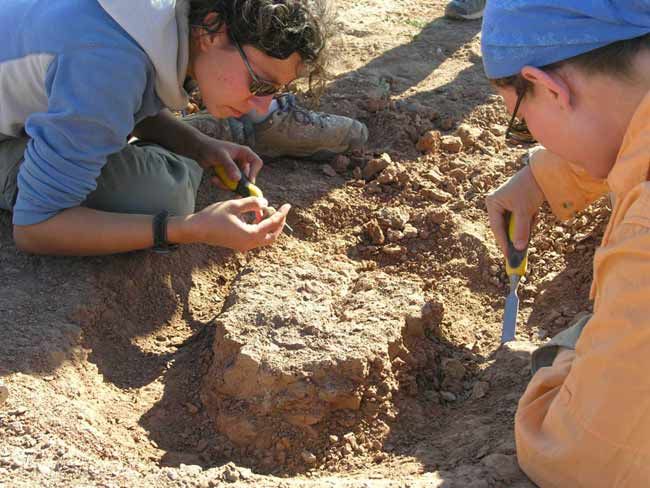Dino Hunters Buried in Fossils

Paleontologists from Montana and Mongolia, who want to flesh out the developmental biology of dinosaurs, recently found 67 dinosaur skeletons in the Gobi Desert in just one week.
"That's what I was there for— getting as many of those as we could possibly get," said Jack Horner, a Montana State University paleontologist.
The skeletons were of a particular dinosaur—Psittacosaurus, or “parrot lizard”—a plant-eater that lived about 120 million years ago, and was an ancestor of horned dinosaurs like the Triceratops.
Psittacosaurus isn’t a new species, but is very common and provides paleontologists with lots of specimens, which is precisely what this team wanted. By examining a large number of fossils, Horner can compare variations between skeletons of the same species and observe changes during the growth of the beasts from youth to old age.
"The reason I went after Psittacosaurus was because I figured I could get more of those dinosaurs in the shortest period of time than any other dinosaur," Horner said this month in announcing the findings.
The project [image] was designed in part to bolster the paleontology program of Mongolia’s Science and Technology University, where the fossils will remain. "This project is primarily for the benefit of Mongolia, looking for specimens for them to put in a museum we're going to encourage them to build," Horner said.
The team did find two other fossils, one that looked like a raptor, and the other possibly a new species.
Sign up for the Live Science daily newsletter now
Get the world’s most fascinating discoveries delivered straight to your inbox.
"We find new species all the time," Horner said, adding that "a hundred Psittacosauruses are a lot more interesting to me than new species."
- Images: Dinosaur Fossils
- Dinosaurs that Learned to Fly
- Digging up Dinosaurs ... and Keeping the Bones
- The Biggest Carnivore: Dinosaur History Rewritten
- Scientists Debate Dinosaur Demise
- A Brief History of Dinosaurs
- All About Dinosaurs












